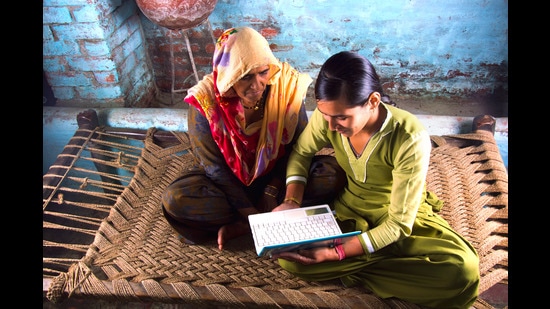WASHing away the climate crisis risks
The climate crisis has brought with it profound challenges for women, among them the impact on water, sanitation and hygiene (WASH). Women in rural and peri-urban areas face significant risks related to water access during extreme weather events. Many rely on water tankers, which may not be enough if there are prolonged disruptions. Water sources can be contaminated during floods or dry up during heat waves.
There is a need to increase women and marginal communities’ participation in decision-making bodies like slum development committees (Getty Images)
A study in Bhubaneswar and Jaipur looks at the impact on WASH in women-headed households in informal settlements, women categorised as vulnerable due to age and disabilities, and the urban poor. The study was conducted by the Centre for Advocacy and Research (CFAR) and supported by Water for Women and Australian Aid. Akhila Sivadas, executive director, CFAR, said: “The aim is to prioritise interventions and strategies that address the needs of the most affected groups so that we develop people-centric solutions together with all stakeholders.”
The study provides enough data to frame scalable solutions. In Bhubaneswar, nearly half of the women-headed households were situated near drains and canal roads (48.7%), making them susceptible to waterlogging and flooding during rains and cyclones. Similar risks afflict 18.3% of households, which are in low-lying areas, and 1%, which are on riverbanks. In Jaipur, households in hilly terrains (20.2%) risk landslides during heavy rains, while those in low-lying areas (22.3%), near drains and canal roads (14.9%), and riverbanks (3.2%) are prone to flooding. Those near dumping grounds (4.3%) face higher health risks.
In Bhubaneswar’s Ward 43, Jhuna Naik secured support from CFAR-facilitated experts and financial support from Slum Development Association (SDA) to reconstruct toilets in her low-lying slum. The effort included installing concrete roofs and raising septic tank heights to withstand heavy rainfall and flooding. Her initiative exemplifies effective localised adaptation strategies, showing community resilience against extreme weather events. In Ward 5, Sambari Purti and local officials overcame the challenge of open defecation by constructing toilets that have elevated pans and heightened side walls, to prevent waterlogging/overflow during cyclones and rains.
In many of Jaipur’s settlements, community-driven initiatives have pinpointed vulnerable households and strengthened WASH practices. Residents, including Manju from Katputli Nagar and Vijaylakshmi Kanwar, spearheaded efforts to combat water scarcity and mitigate extreme weather impacts. These initiatives include water conservation campaigns in Bhojpura, where partnerships with local authorities have improved water accessibility. In Ganeshpuri and Bandha Basti, women-led projects are constructing permanent barriers to protect against floods.
With flooding come a host of infectious and vector-borne diseases. Given the vulnerabilities faced by women due to the climate crisis, localised adaptation strategies, enhancing infrastructure resilience, and ensuring community awareness and consensus must be prioritised. Increased collaboration among local authorities, civil society, and technical experts is essential.
The important finding from this study is the need to increase women and marginal communities’ participation in decision-making bodies like slum development committees, so that they can also contribute to the solutions and help in the implementation of localised solutions at the community level, like construction of water storage facilities with the help of ward-level representatives. Continuous follow-up, monitoring and tracking of the implementation of the programmes and actions can ensure that the climate crisis does not add further to the health and livelihood burden women already face.
The views expressed are personal
Images are for reference only.Images and contents gathered automatic from google or 3rd party sources.All rights on the images and contents are with their legal original owners.


Comments are closed, but trackbacks and pingbacks are open.